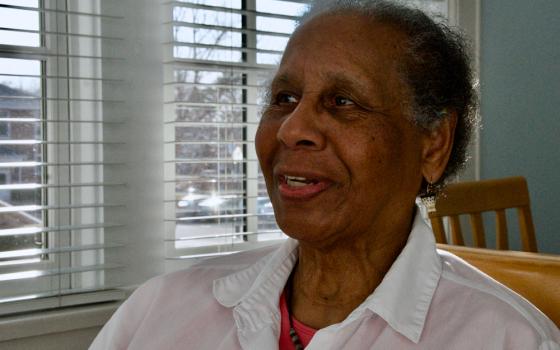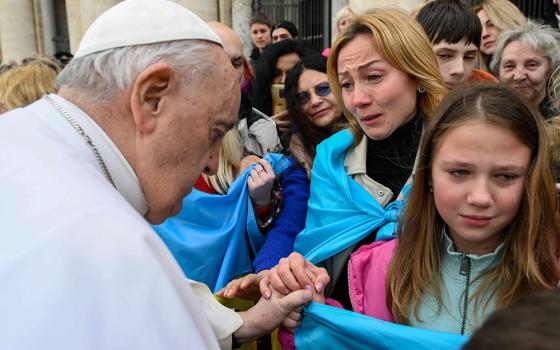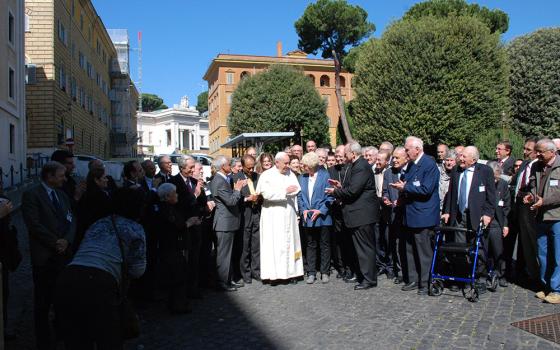
(Unsplash/Yaniv Knobel)
When I visited my parents in the early years of my religious life, I would tell them of events and stories of my days. My mother would look bewildered and bemused as she always did, claiming to not understand convent life in any aspect. (This was particularly amusing to me as my aunt, her sister-in-law, had entered religious life soon after my parents were married, so she'd had a "nun in the family" forever.) My dad, too, answered the same way, though not befuddled or confused at all. "It's just like the army," was his response. He didn't mean it in any derogatory or militaristic way — he was referring to what it's like going through the day as part of a large group: whether it was with young guys brought together by World War II or with other young women beginning religious life.
Decades have come and gone, of course, since those first stories, but even now some of his analogy persists. One of them that is particularly striking to me is the morning wake-up call — reveille at 5:45 a.m.! At least that's the time I usually respond to my alarm; some sisters start a little earlier, and some roll out at 6:20 and still make it for the 6:30 a.m. morning prayer.
Praying first thing in the morning is not unique to my community nor to sisters in general. Spiritual people of all traditions and of no tradition value their daily meditation, quiet time and prayer — whether they carve out time for it in the morning or in the evening or in between.
As Benedictines, we follow a ritual based on the psalmody. We chant or recite three psalms or canticles, the Benedictus (Zachary's Canticle), responses, the Prayer of Jesus and a closing blessing from the prioress. This continues morning after morning after morning. There are variations here and there, for feasts or special events, but the basic structure is the same.
I don't know why we post the page numbers or why we all follow the phrasing meticulously by reading our books. We all know them by heart. We even know the five weekly chant modes from memory. If the electricity goes out some morning, I know we'd be just fine. Once the leader started the first line, we'd be off — whether it would be reciting or singing a cappella.
Advertisement
Faithfulness to such a daily commitment is strengthened by its purpose. There is so much to pray for, remember, recount, express thankfulness for, and even sit with in silence. However one calls to one's God, that relationship is fostered here. Even the climate of the seasons contributes to our morning invocations. In my hometown we are greeted with the sharp rising sunlight in summer and dark cold mornings in winter.
I read a wonderfully creative poem by a monk of St. John's Abbey in which he reflected on various members of his community as they entered chapel in the morning. I laughed and laughed at the images and descriptions, probably because I could pair each monk of his with one of our sisters: the prayer leader already in her place, the one with the perky step at 6 a.m., one still putting on her sweater as she walks in, one dragging a bit after a late night listening session with a suffering friend, the octogenarian pushing a walker to stay upright, a musician double checking the music chart, one whose shoes squeak (still), the new postulant wide-eyed and trying to get all the parts down correctly, three visitors looking tired but eager, and the straggler who's never on time, but never misses.
We are the praying church, at least our little part of it — the praying congregations and individuals that bring praise, gratitude, petition to the Creator each and every day, around the world.
So why continue to rise to this daily commitment? I admit that there are many, many days when my first conscious thought is, "Oh, maybe I'll sleep in today." But I hardly ever do. This is our proverbial anchor for the next 12 hours, one of, if not the primary, raison d'etre for my life.
It's why we exist, it's why I join 50 other women in answering this morning bugle — just as my Dad did.
[Susan Doubet is a Benedictine Sister of Erie, Pennsylvania, and is currently the subprioress of the community. She is a former secondary teacher and administrator and has worked in numerous areas of communications for over 20 years.]







